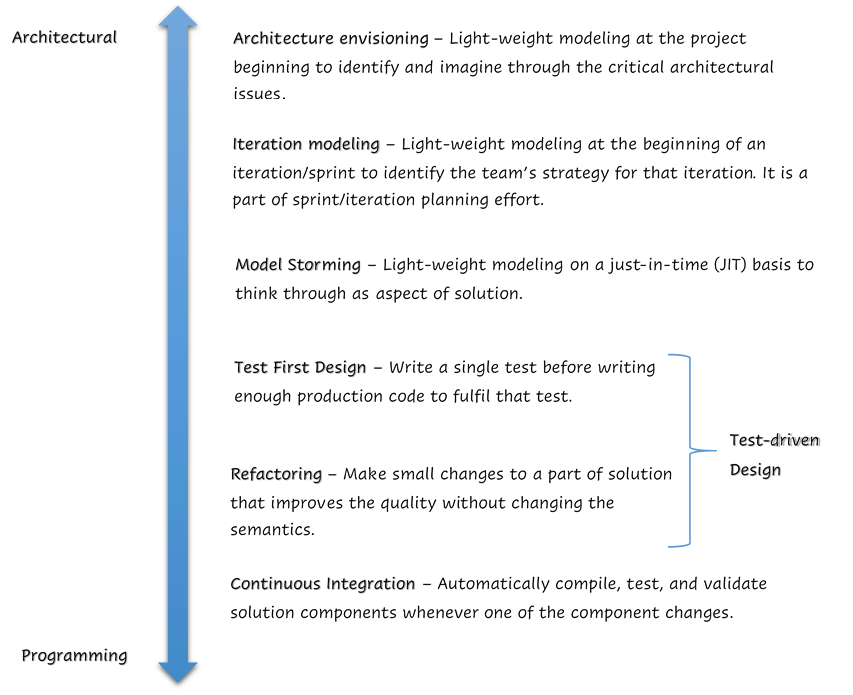Agile Design
Agile Design is an approach that integrates design activities into the Agile software development process. Instead of finalizing designs upfront, it promotes iterative design, allowing teams to adapt to changes and feedback throughout the development cycle.
Example: Imagine a team at SLSI Corp working on a new mobile app. Instead of designing the entire app before development, they design and develop features in small increments, allowing for adjustments based on user feedback.
Agile Design Practices -
Let us learn about a few Agile Design Practices. They are shown below as a hierarchy from high-level programming practices to low-level Practices. Each of these designs is important for effective agile design.

Agile Design Practices
Agile Design encompasses various practices that facilitate iterative and collaborative design:
- Evolutionary Design: Designs evolve over time through continuous refactoring and integration of new insights.
- Collaborative Design: Designers, developers, and stakeholders work closely to ensure the design meets user needs.
- Just-In-Time Design: Design decisions are made when they are most needed, avoiding unnecessary upfront design.
Example: At SLSI Corp, the design team collaborates with developers during each sprint to design features based on the latest requirements and feedback, ensuring the design remains relevant and user-centric.
Agile Design Philosophies
Several philosophies underpin Agile Design:
- Design for Change: Anticipate and accommodate changes in requirements and technology.
- Simplicity: Focus on simple designs that meet current needs without overcomplicating.
- Feedback-Driven: Use user and stakeholder feedback to guide design decisions.
Example: The SLSI Corp team designs a feature with the expectation that user needs may change. They keep the design simple and modular, making it easier to adapt based on future feedback.
